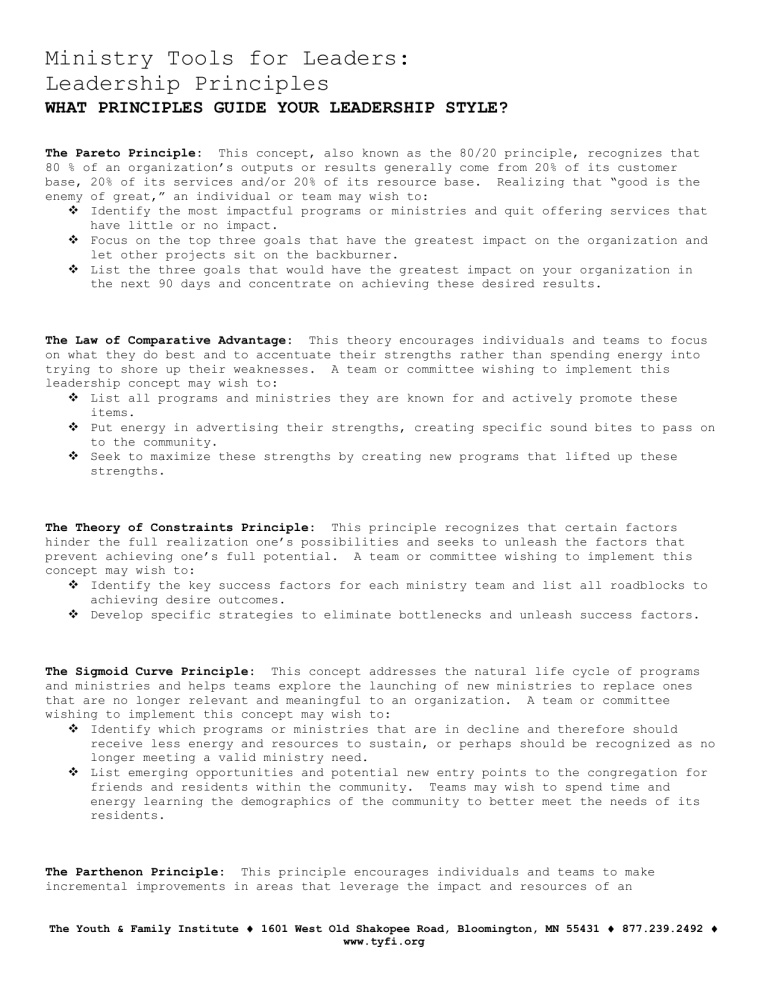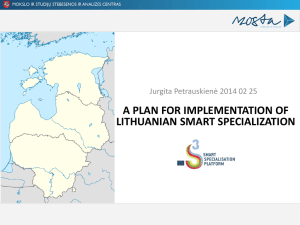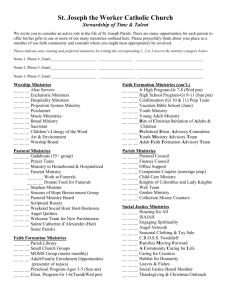HISTORY - Vibrant Faith

Ministry Tools for Leaders:
Leadership Principles
WHAT PRINCIPLES GUIDE YOUR LEADERSHIP STYLE?
The Pareto Principle: This concept, also known as the 80/20 principle, recognizes that
80 % of an organization’s outputs or results generally come from 20% of its customer base, 20% of its services and/or 20% of its resource base. Realizing that “good is the enemy of great,” an individual or team may wish to:
Identify the most impactful programs or ministries and quit offering services that have little or no impact.
Focus on the top three goals that have the greatest impact on the organization and let other projects sit on the backburner.
List the three goals that would have the greatest impact on your organization in the next 90 days and concentrate on achieving these desired results.
The Law of Comparative Advantage: This theory encourages individuals and teams to focus on what they do best and to accentuate their strengths rather than spending energy into trying to shore up their weaknesses. A team or committee wishing to implement this leadership concept may wish to:
List all programs and ministries they are known for and actively promote these items.
Put energy in advertising their strengths, creating specific sound bites to pass on to the community.
Seek to maximize these strengths by creating new programs that lifted up these strengths.
The Theory of Constraints Principle: This principle recognizes that certain factors hinder the full realization one’s possibilities and seeks to unleash the factors that prevent achieving one’s full potential. A team or committee wishing to implement this concept may wish to:
Identify the key success factors for each ministry team and list all roadblocks to achieving desire outcomes.
Develop specific strategies to eliminate bottlenecks and unleash success factors.
The Sigmoid Curve Principle: This concept addresses the natural life cycle of programs and ministries and helps teams explore the launching of new ministries to replace ones that are no longer relevant and meaningful to an organization. A team or committee wishing to implement this concept may wish to:
Identify which programs or ministries that are in decline and therefore should receive less energy and resources to sustain, or perhaps should be recognized as no longer meeting a valid ministry need.
List emerging opportunities and potential new entry points to the congregation for friends and residents within the community. Teams may wish to spend time and energy learning the demographics of the community to better meet the needs of its residents.
The Parthenon Principle: This principle encourages individuals and teams to make incremental improvements in areas that leverage the impact and resources of an
The Youth & Family Institute 1601 West Old Shakopee Road, Bloomington, MN 55431 877.239.2492 www.tyfi.org
Ministry Tools for Leaders:
Leadership Principles
organization, thereby creating a sustained long-term impact on the congregation. A team or committee wishing to implement this leadership concept may wish to:
Identify key success factors in specific desired outcomes such as worship attendance, the number of new visitors and increases in giving (Are you learning from the successes of others?)
Develop specific strategies for enhancing the impact of each key success factor.
The Zero-Based Principle: This tool is designed to help teams detach from previous decisions and actions and view current ministries from a fresh perspective. Individuals or team wishing to implement this concept may wish to ask:
If we weren’t currently offering this ministry now would we launch it again?
If I was not currently part of this ministry team, would I volunteer to serve in this capacity?
If I could join any team within the church, which one would I be most passionate about?
The Youth & Family Institute 1601 West Old Shakopee Road, Bloomington, MN 55431 877.239.2492 www.tyfi.org











